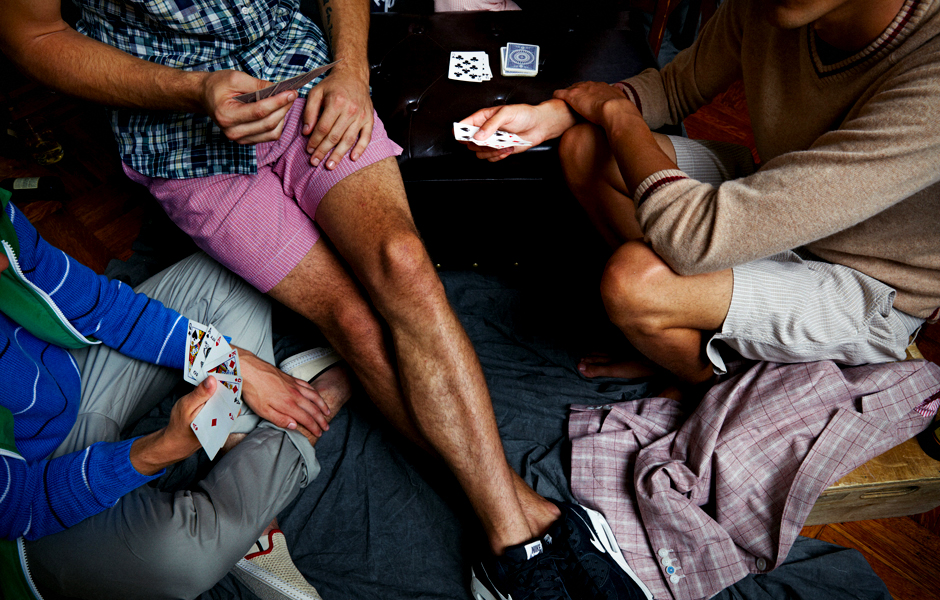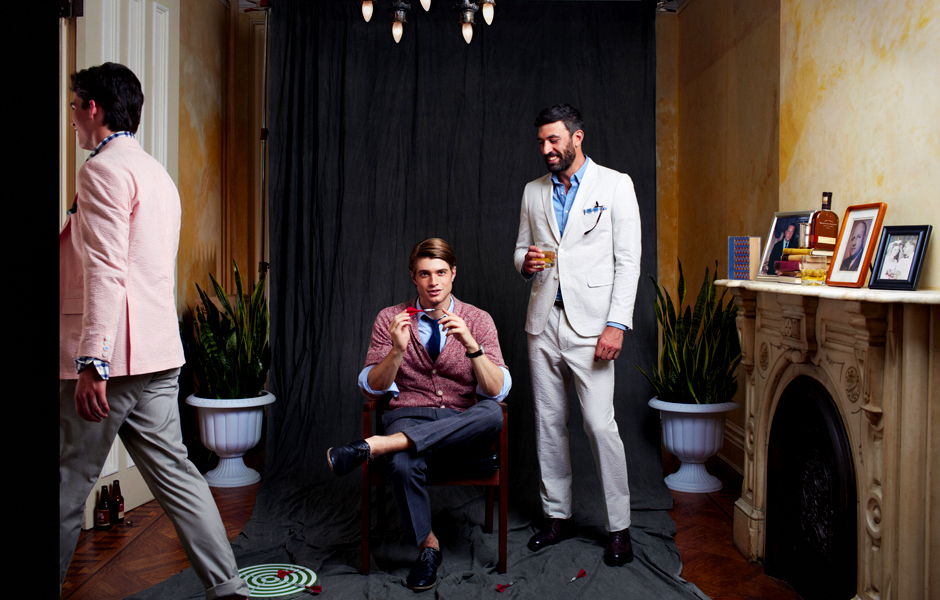Best known for introducing seersucker to the masses as the quintessential warm-weather fabric, the century-old New Orleans company Haspel is having a brilliant revival this spring, thanks to its new design directors, Shipley + Halmos designers Sam Shipley and Jeff Halmos (above), and growing demand for “made in America.” Soon to be available at Nordstrom, the irresistibly handsome but unstuffy made-to-measure suiting and sportswear collection comprises everything from exquisitely crafted double-breasted blazers and colorful windbreakers to luxuriously soft knits, breezy linen check shirts, striped polos and club shorts, with updated proportions and other irreverent details such as sewn labels on the garments that read “Haspel damn right” and “Haspel no hassle, only haspel.” Here, our recent chat with Jeff on giving Haspel its fresh new look.
M: Congrats on the new appointment! Haspel’s a true heritage brand and an American one at that. What does Haspel mean to you?
JH: It’s something that we care about and put a lot of time into. Seeing that it’s a 105-year-old brand, our hope is that we can introduce it to a new group of people who might not be familiar with it already.
M: No doubt there must be a wealth of Haspel archives you could draw on. What can you tell us about them?
JH: Believe it or not, there wasn’t a huge archive. The company hadn’t produced a line since the 70s and they just didn’t have a ton of old samples and other things. They didn’t have the original seersucker suit on hand. They did have a large selection of press clippings, catalogs and advertisements from the mid 60s and 70s, so we could read into that. But we were not able to have a reference point for the clothes themselves.
M: So without being able to reissue the clothes, the approach would be more abstract and modern then?
JH: What was always important is that they were made in America and it was clear that the guy who was buying it was one who very much enjoyed his lifestyle. So we used that as a jumping off point and went from there. Our goal was to re-imagine it and bring it to a present tense place.
M: The collection is so light, airy and accessible, with seersucker of course being the draw. Is there a right way and a wrong way of approaching seersucker for the first time customer?
JH: There are a couple of ways. People have a common perception that all seersucker is equal. That’s not necessarily the case. We like a densely woven seersucker, but by nature it’s a breathable, lightweight fabric. The word dense scares people, but it shouldn’t. That’s one thing. From a fabric standpoint, what’s great about seersucker is that it’s one way in tailored clothing to have fun with color without looking too much like costume. It’s a way to infuse some color into your wardrobe in terms of suiting without feeling out of place or like you’re going to some sort of carnival.
M: The label tags are very you. Do you think there needs to be more humor in menswear?
JH: We always subscribe to that. That this is just clothes. We’re not solving the world’s greatest mysteries with what we’re doing here, so we’re always lighthearted about the whole thing. These are beautifully made suits made here in America; we use very nice Italian fabrics. But at the same time, the message behind the brand doesn’t always have to be so, so serious. That’s always been our approach to the industry.
M: You’ve been a designing duo for many years now. How do you reconcile Haspel with your brand?
JH: This is a fun project. We don’t own Haspel. We’ve been hired by Laurie [Haspel Aronson, president and a fourth generation Haspel] and her family to bring it back, so in our case we’re looking at what is the brand’s messaging, what does it stand for, what’s our approach. It’s not really about what we love but what is right for the brand.
M: Probably the hardest thing to learn is how to say no in this industry. What do you say not to?
JH: We said no to a lot of other projects. What we liked about this one is that it’s a brand that’s so iconically American that a lot of us aren’t familiar with, so we thought it would be a fun opportunity to educate the consumer on the brand.
M: You do strike folks as being fun and chill. What’s the last thing you did for fun?
JH: Actually, my wife and I just had a baby—fun is one way to put it (laughs). It’s an experience, a life-changing experience that’s been incredible. That’s what I’ve done “for fun.” Sam and I usually go on a snowboarding trip to Colorado, but we had to postpone it.
M: Finally, any recommendations on where to hang, eat and party in New Orleans?
JH: We went to that really old restaurant Galatoire. I get the impression it’s this power-multiple martini kinda lunch atmosphere. You can go the party route in ‘Nawlins’ but there’s some incredible food there too. The best part of the city is the food—I’ve never eaten so much for so long! But there are also some really cool areas to scope out. To me New Orleans has its own character, there’s something about it that sets it apart. Maybe it’s the architecture, but there’s something about it that feels special.






